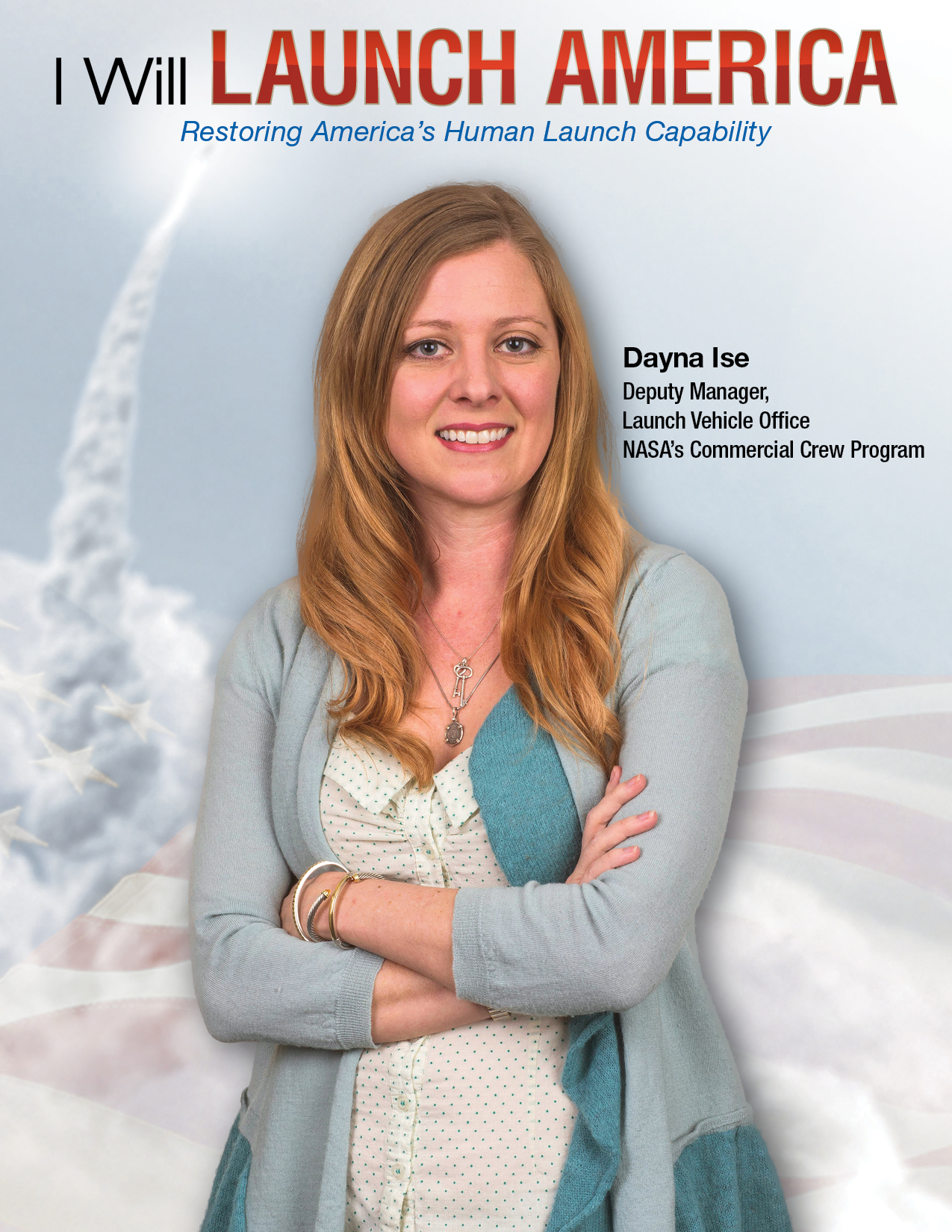American-built rockets will soon once again launch astronauts from American soil, and Dayna Ise, an engineer at NASA’s Marshall Space Flight Center in Huntsville, Alabama, is excited to be part of the program making this possible.

Ise, deputy manager of the Launch Vehicle Office in NASA’s Commercial Crew Program, said working at the dawn of a new generation of human spaceflight brings intensity in a number of areas.
“Of all the projects I have been part of with NASA in my 15 years, this is easily the work I am most proud of,” said Ise, who started her career working on space shuttle main engines. “I joined the team early on, almost five years ago, and it’s been fun to see it grow. It’s exciting to be part of program that will launch astronauts to the space station from American soil and allow NASA more resources for exploration deeper into our solar system.”
NASA’s ultimate goal with the Commercial Crew Program is to establish reliable and cost-effective human access to space. In the Launch Vehicle Office, Ise works with industry partners to ensure all launch vehicle requirements and standards are met before launching astronauts for NASA. SpaceX will launch its Crew Dragon spacecraft on a Falcon 9 rocket, while Boeing will launch its CST-100 Starliner spacecraft on a United Launch Alliance Atlas V rocket.
Unlike previous human spaceflight programs, NASA did not design the spacecraft and rockets and will not own and operate them. The companies will do that. NASA is lending its expertise in developing the systems and will certify the launch vehicles, spacecraft and related hardware and operations once they meet all requirements for flight.
“NASA has spent a lot of time sending people into low-Earth orbit,” said Ise. “We know how to do it, and now it’s time to turn over that knowledge and capability to commercial companies so that they can figure out how to do it cheaper and more efficiently, while maintaining crew safety requirements.”
Commercial crew transportation to and from the station will provide expanded utility of the International Space Station, including additional crew time dedicated to research on the orbiting laboratory. The station is a critical test bed for NASA to understand and overcome the challenges of long-duration spaceflight necessary for the journey to Mars.
“Low-Earth orbit provides us a foundation for deep space exploration,” said Ise. “People living on the space station are teaching us what to expect on long-duration missions, like those to Mars.”
Commercial partners transporting astronauts to and from the space station will allow NASA to focus on other areas of exploration, namely deep space.
“Commercial Crew and the space station are important building blocks for moving beyond,” said Ise. “A quick, efficient way of sending people to low-Earth orbit will allow NASA to spend time and energy in other endeavors including missions to an asteroid and eventually to Mars.”
The Commercial Crew Program is primarily based at NASA’s Kennedy Space Center in Florida, but many NASA team members agency-wide work with the program. Almost half of those working with commercial crew are involved in the work at other NASA centers, including Marshall and NASA’s Johnson Space Center in Houston.
At Marshall, about 100 engineers support many aspects of the program, including launch vehicle, spacecraft and integrated performance. With Marshall supporting several fields, Ise also manages Marshall’s overall commercial crew work package for the agency in addition to her role as launch vehicle deputy manager.
























